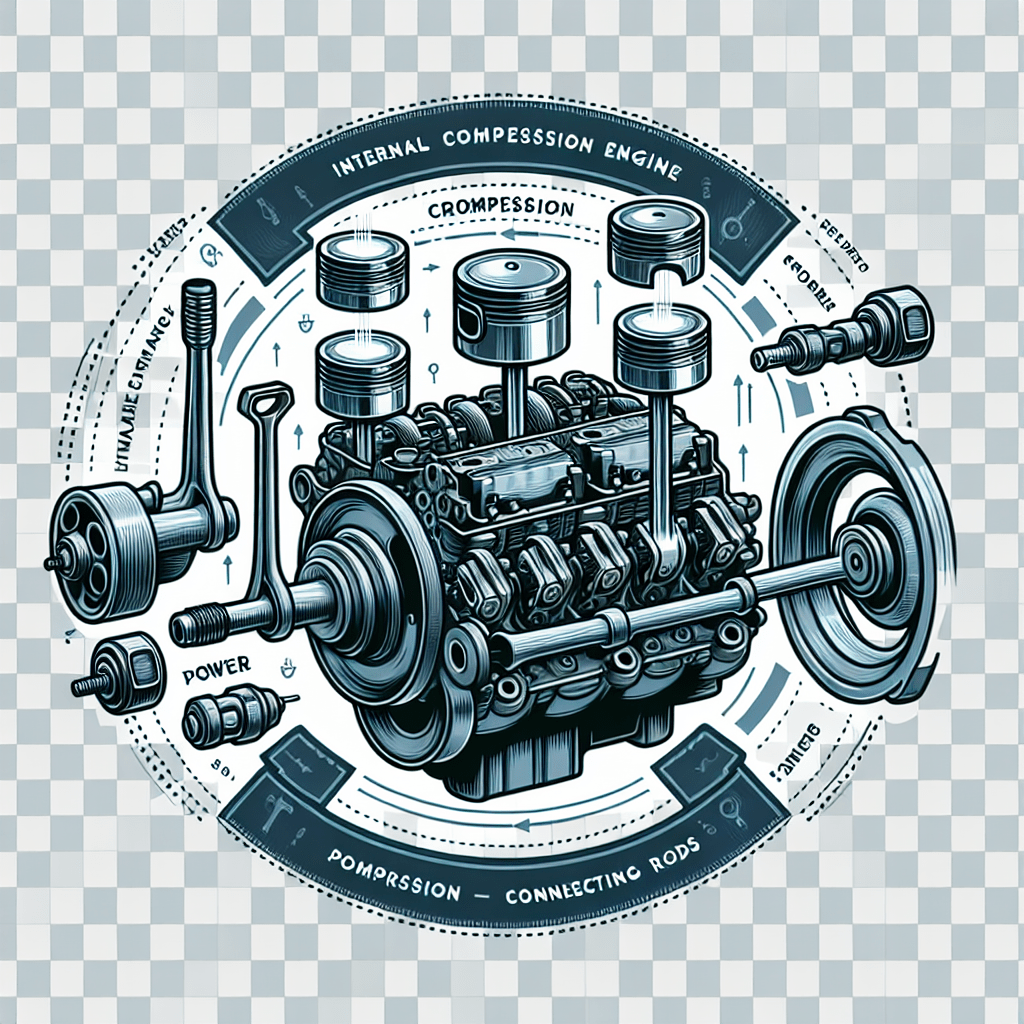The Role and Mechanism of Pistons in Engine Performance
Pistons play a vital role in the internal combustion engines of most automobiles as well as in various other machinery. Their primary function is to convert the energy produced from the combustion of fuel into mechanical work, which ultimately powers a vehicle or machinery. In this extensive article, we’ll explore the design, function, work cycle, materials, and maintenance of pistons.
Understanding the Function of Pistons
Pistons are cylindrical components that move up and down within the cylinder bore of an engine. The top surface of the piston, often referred to as the crown, is exposed to the combustion chamber where fuel and air are mixed and ignited. The force generated from this combustion pushes the piston downward. This linear motion is then converted into rotary motion by the connecting rod and crankshaft, ultimately driving the wheels of a vehicle or rotor of other machinery.
The Four-Stroke Process
Internal combustion engines commonly operate on a four-stroke cycle consisting of intake, compression, power, and exhaust strokes. During the intake stroke, the piston moves down while the intake valve opens, drawing in a mixture of air and fuel. The piston then moves up during the compression stroke, compressing this mixture. Following compression, ignition occurs and the piston is forced downward during the power stroke. The process concludes with the exhaust stroke where the piston moves upward to expel exhaust gases out of the cylinder.
Design and Components
Modern pistons are engineered to achieve a balance between strength, durability, and lightweight construction for optimal performance. They contain several components:
– Ring Lands: Grooves cut around the circumference where piston rings sit to seal off combustion gases and manage oil.
– Piston Skirt: Part of the piston that sides along the cylinder walls providing stability and reducing wear.
– Wrist Pin: Connects the piston to the connecting rod, aiding motion transfer.
– Oil Channels: Ensure lubrication to reduce friction and carry away excess heat.
The design can also vary depending on performance requirements. For instance, high-performance engines might use pistons with minimized skirts to save weight or additional cutouts to allow for larger valve opening sizes.
Material Selection and Innovations
Materials used in piston construction must withstand high pressures, heat, and friction. Traditional materials for pistons include alloyed aluminum due to its lightweight and good thermal conductivity. However, high-performance or heavy-duty applications may require steel or other alloy materials offering superior strength.
Recent innovations include enhancing material composites with ceramics or implementing more effective cooling systems within the piston to handle increased power outputs or to improve efficiency.
Maintenance and Longevity
Routine service and proper maintenance are critical for prolonging the life of pistons. Factors such as regular oil changes can significantly impact their longevity by ensuring proper lubrication and cooling. Additionally, using high-quality fuel can result in cleaner combustion and less stress on engine pistons over time.
After extended use or under challenging conditions like motorsport or heavy towing, pistons may suffer from wear and require inspection. Warning signs such as knocking sounds from your engine or reduced gas mileage may indicate that a piston inspection is necessary.
Environmental Considerations
With growing concerns about the environmental impacts of internal combustion engines, piston technology has adapted to meet stricter emission standards. Design improvements focus on increased efficiency through higher compression ratios and reduced weight. There is also an expanding use of alternative material coatings which reduce friction losses further.
The Future of Pistons
As electric vehicles (EVs) gain popularity given their zero-emission nature, focusing on pistons might seem futile. However, hybrid technologies that utilize both electric motors and internal combustion engines currently rely on pistons for operation during longer drives or when extra power is demanded. Moreover, other fuels like hydrogen may still depend upon an evolution of current piston technology for combustion.
